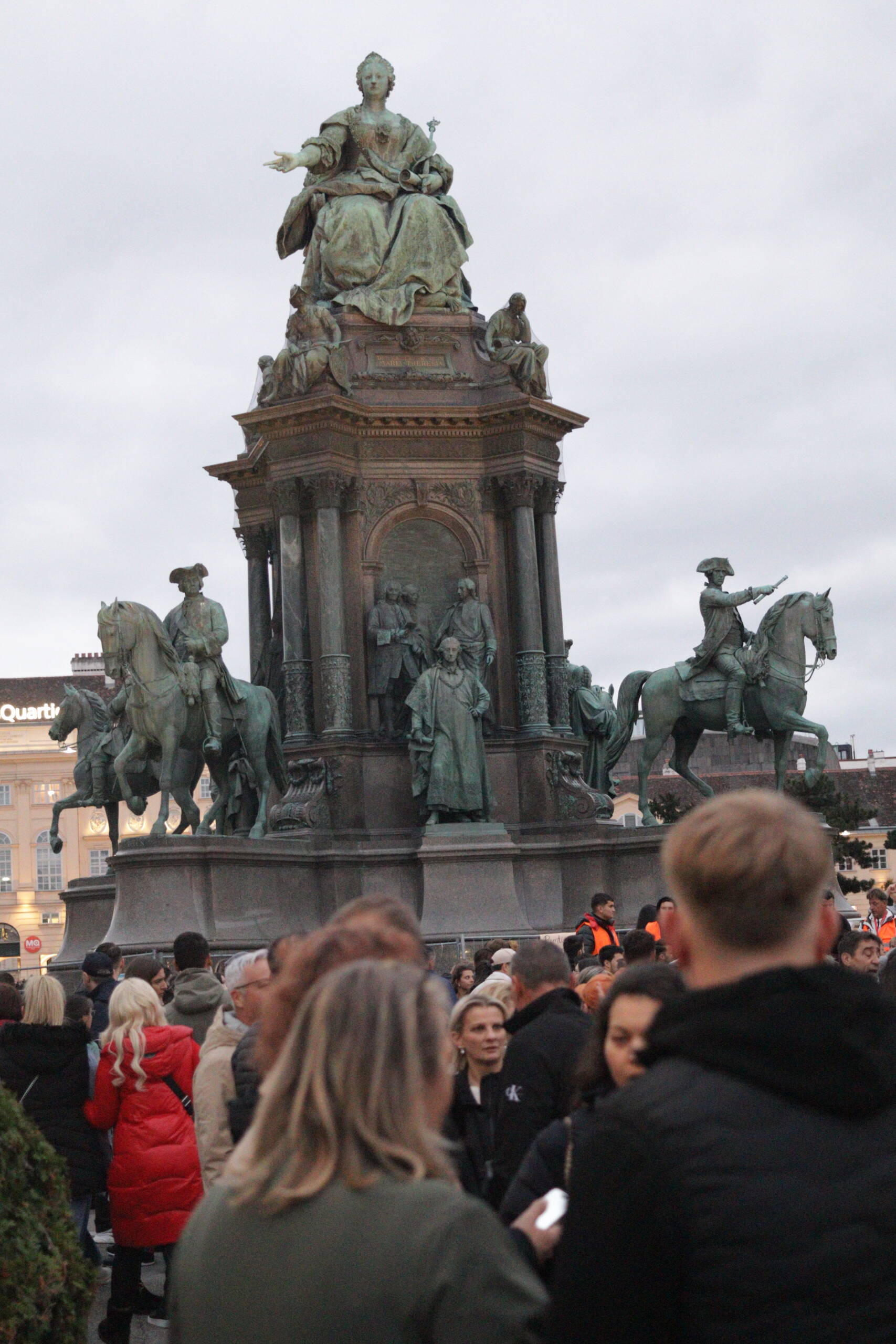There she is, looming above everyone in the gray Viennese twilight: Maria Theresia, cast forever in bronze, seated with serene authority, her arm extended as if to greet or command. The monument, so monumental it almost feels redundant to call it that, rises like a stage where history insists on performing itself again and again. Around her, generals on horseback and statesmen in heavy cloaks hold their eternal positions, frozen in loyal service. And yet, the living crowd below—the jackets zipped against the evening chill, the tourists clutching phones and cameras, the Viennese locals weaving through—make the statue feel less like a relic and more like a matriarch still presiding over her household. You can almost hear her saying, “Yes, you’ve built your shopping malls and your cafés, but don’t forget whose shadow you’re walking in.”

It’s funny how the dynamic works: she’s the one seated, technically immobile, but it’s everyone on the ground who seems restless and transient. People shift, shuffle, squeeze past one another, trying to find the best angle for a photo or a clearer path forward. Yet no matter how the human tide moves, the empress above remains the anchor. Even the sky, flat and pale as it is tonight, feels like part of her backdrop, giving her figure more weight than the mere metal allows. If Vienna has queens and kings today, they are political or cultural, fleeting and fragile; Maria Theresia, in her stubborn bronze permanence, is still the one with the last word.
Maybe that’s the secret charm of this square: you come to see history, but what you really feel is her gaze. Whether you’re a local hurrying home, a tourist in a bright red coat, or just someone drifting through the crowd, you leave with the quiet suspicion that Maria Theresia still runs the show.
Leave a Reply